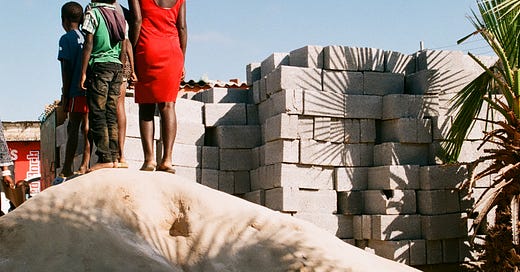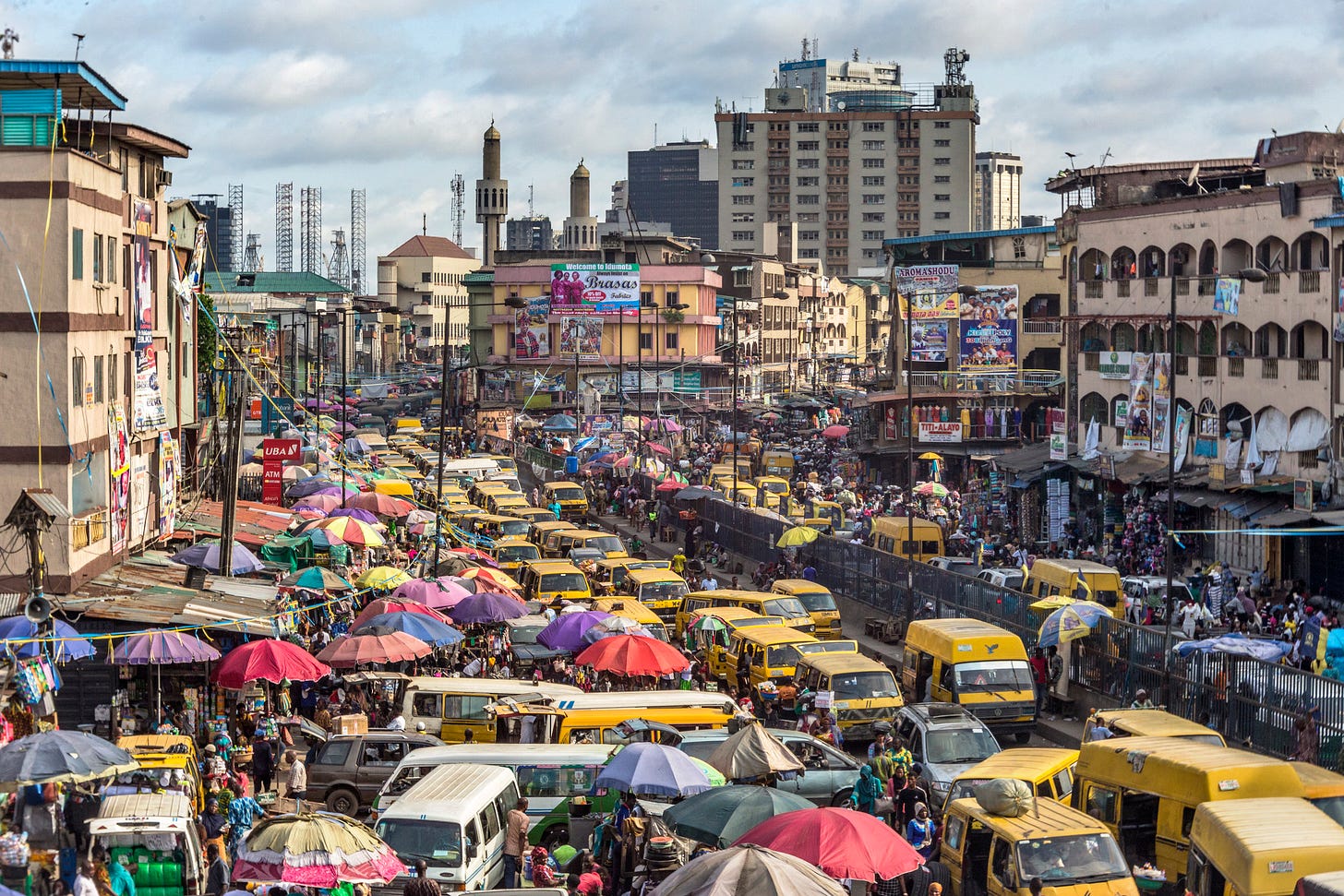It is easy to note that there are two vantage grounds in the photograph: the shaded area from which the picture was taken, and the mound that provides an elevation for a cluster of standing children. By noticing these vantage points, one also pays heed to some sense of order. How the rise of sand reaches its highest point at around the exact point where the children stand, for instance, or how they stand in accordance with their heights. What’s clear, also, is what’s unknown—the length of time required to allot order to the frame, and how long the children waited for the scene to unfold.
— Emmanuel Iduma
“Anyone who cares to develop their photographic eye can compose a good photograph.”
This photograph was taken at Ngombe Open Community School in Lusaka, 2018. I was commissioned to document an art festival that was touring different schools in the city. These students were perched on the mound of stone, watching the guests that were arriving into the school grounds.
There is something about the shadows in this photograph that make the composition come alive. I wanted to decontextualise the photograph from the school grounds, with minimal natural elements to hold the students into the frame – stones, shadows and sky. The harsh shadows on brick become gentle on the grey ground, politely stopping at the bare feet of the students. The posture and anonymity of the students is also what further dignifies the image – they are looking outward into their future.
I enjoy photographing the banal (what may be deemed banal by others). I tend to interpret and pay attention to what the inanimate happens to communicate – chairs, bricks, trees. I particularly enjoy the natural compositions of shadows that these elements craft in conversation with the sun. I think photography is impactful in this way, as it lends to a development of a voice that our words or mouths cannot always release. I believe that anyone who cares to develop their photographic eye can compose a good photograph – regardless of what type of camera they have.
— Sana Ginwalla
About Sana Ginwalla
Interested in politics of identity, home and belonging, Sana Ginwalla is a Zambia-born artist with origins in India and Myanmar. She is the founder of Everyday Lusaka and Zambia Belonging – art platforms that share more considered visual representations of Zambia’s past and present in order to build a contemporary archive for future generations. See more of her work on her website, and through features in Blind Magazine and The Name of the Next Song.
LAST WEEK — “Mutation,” by Andrew Esiebo
Lagos is so built in. It’s a cacophony of different things together. It seems like it wasn’t planned since you don’t see any areas laid out for pedestrians to walk. You just have to be witty to negotiate with all kinds of things going on in front of you.
ANNOUNCING OUR EDITORIAL FELLOWS: Congratulations to Onotu David, moshood, Sana Ginwalla, Sibongakonke Mama, and Zenas Ubere. Beginning with the January 17, 2024 issue of the newsletter, the Fellows will initiate and facilitate correspondence with the featured photographers, write short narrative captions, and prepare the newsletter for publication.
This is the 99th edition of this publication, which also read on web (best for viewing images), and via the Substack iOS/Android apps.
TENDER PHOTO is a newsletter on African photography. Every Wednesday we feature a photograph and a short caption about it, and include a statement from the photographer. Every Friday, we publish commentaries or photo-essays in response to photographs previously featured on the newsletter. The most recent series is INDEX. Please note that there would be no Friday edition until January 26.
Our goal is to work with African photographers by creating a platform in which they lead the cataloguing and engagement with their work.
Thank you for reading. If this newsletter was shared with you, consider subscribing, or forward to a friend. Please whitelist the newsletter to ensure you never miss it.






take me back to the village